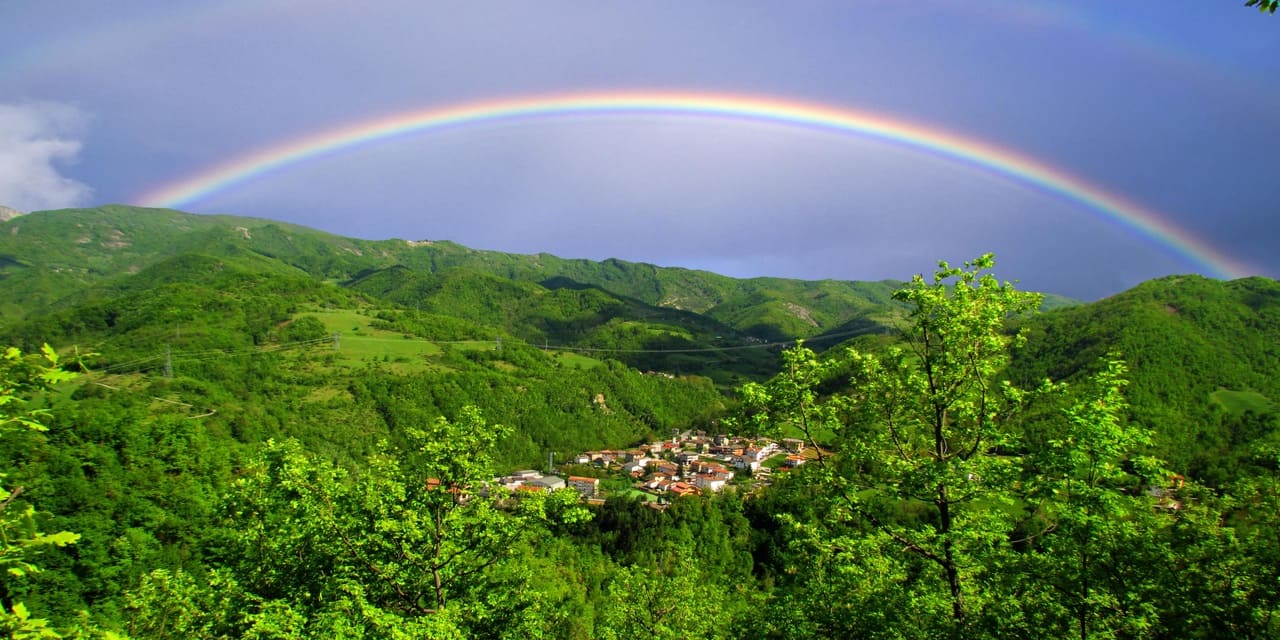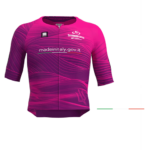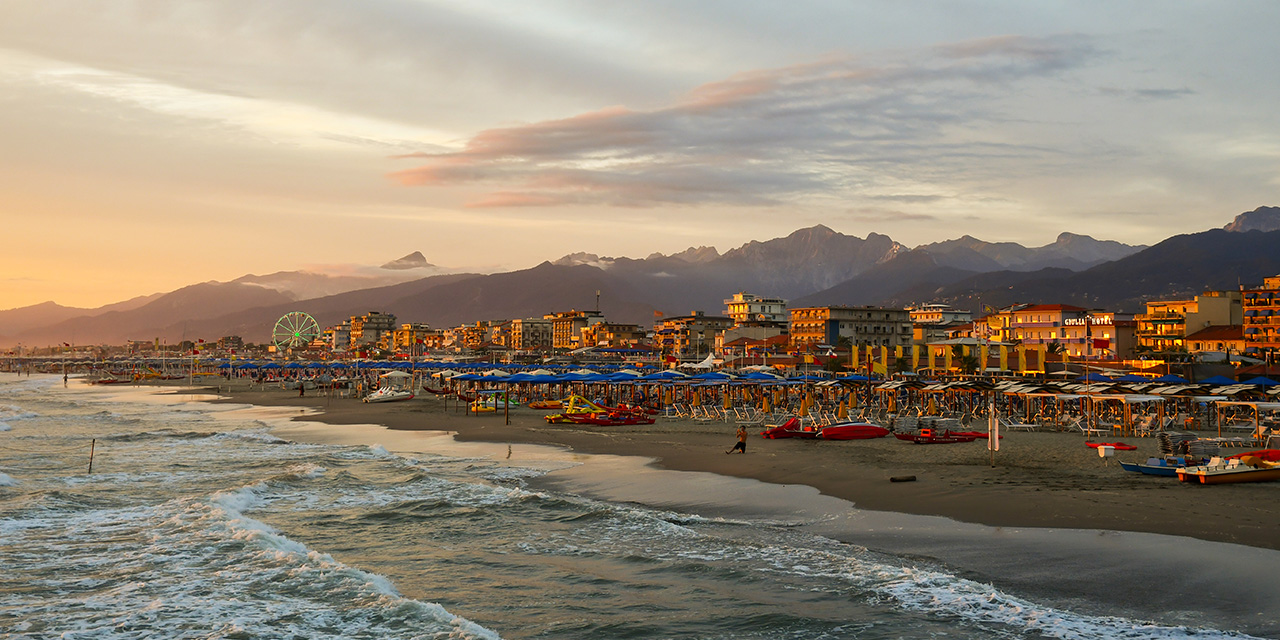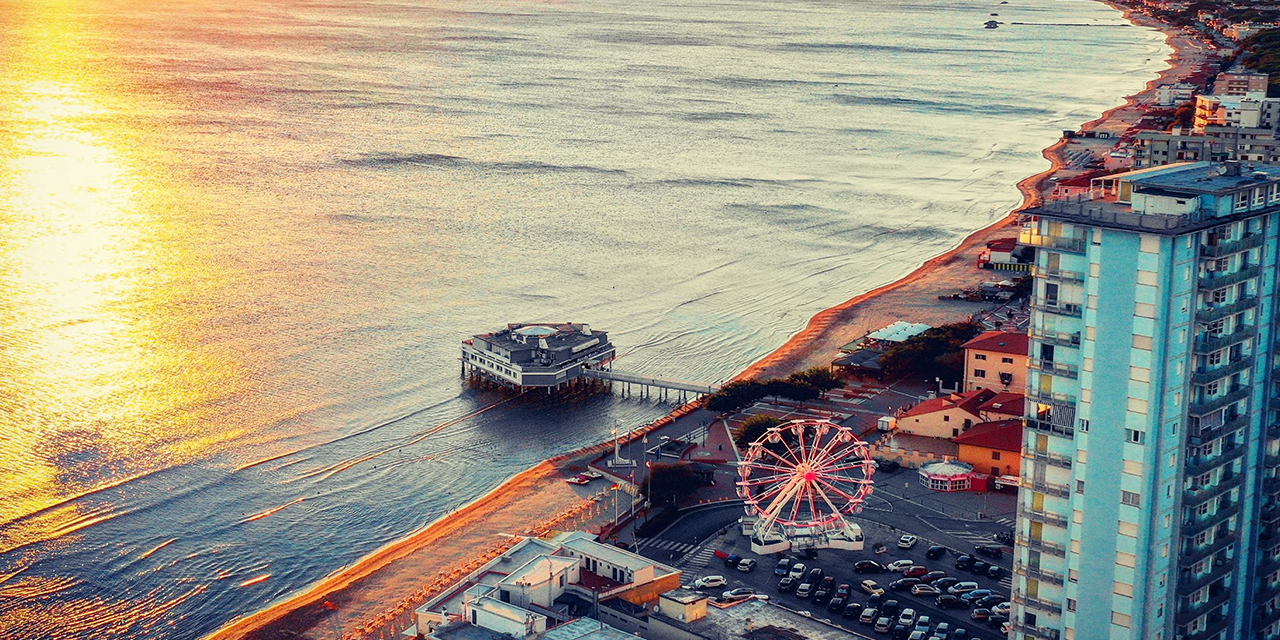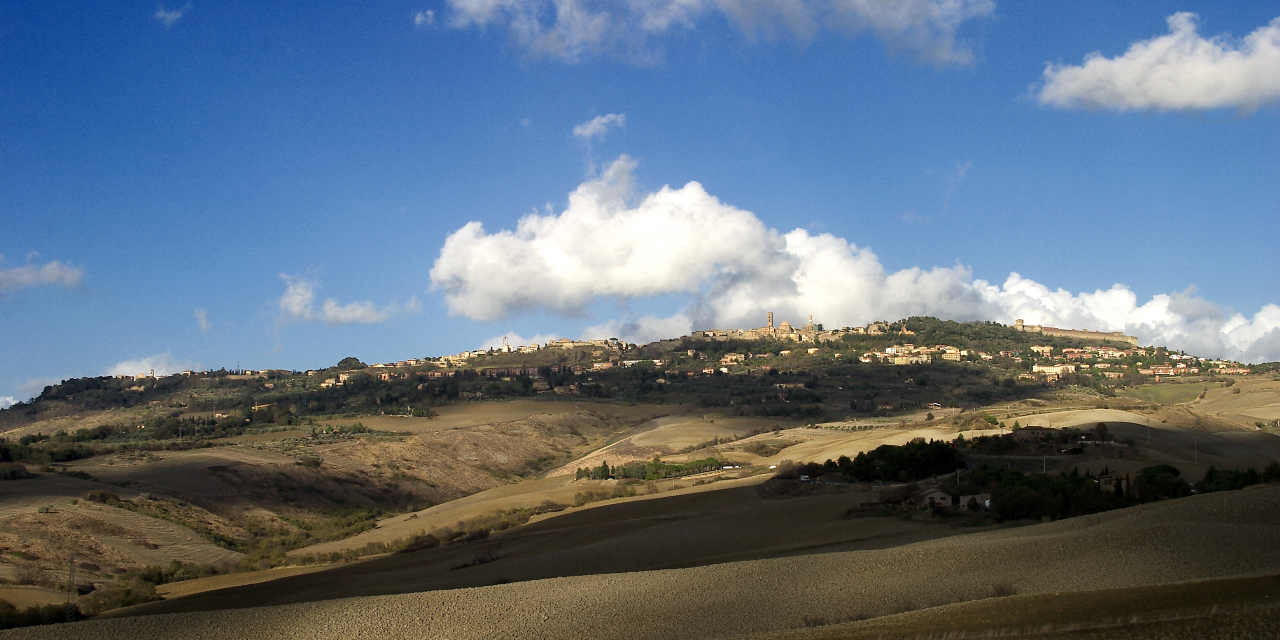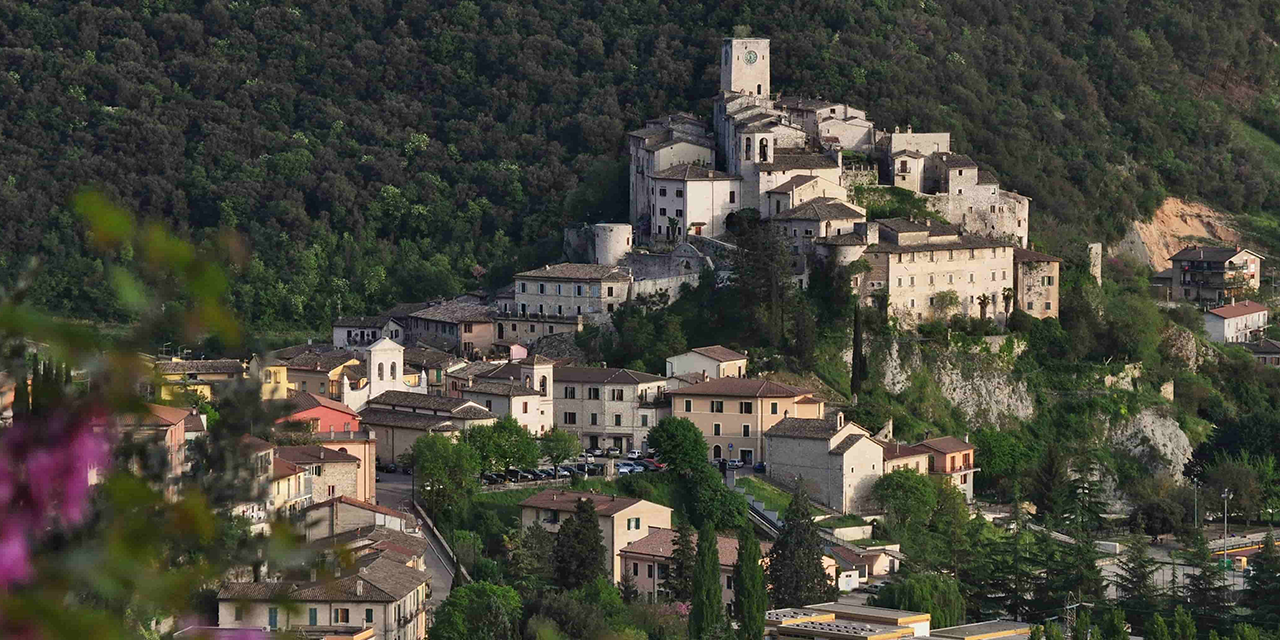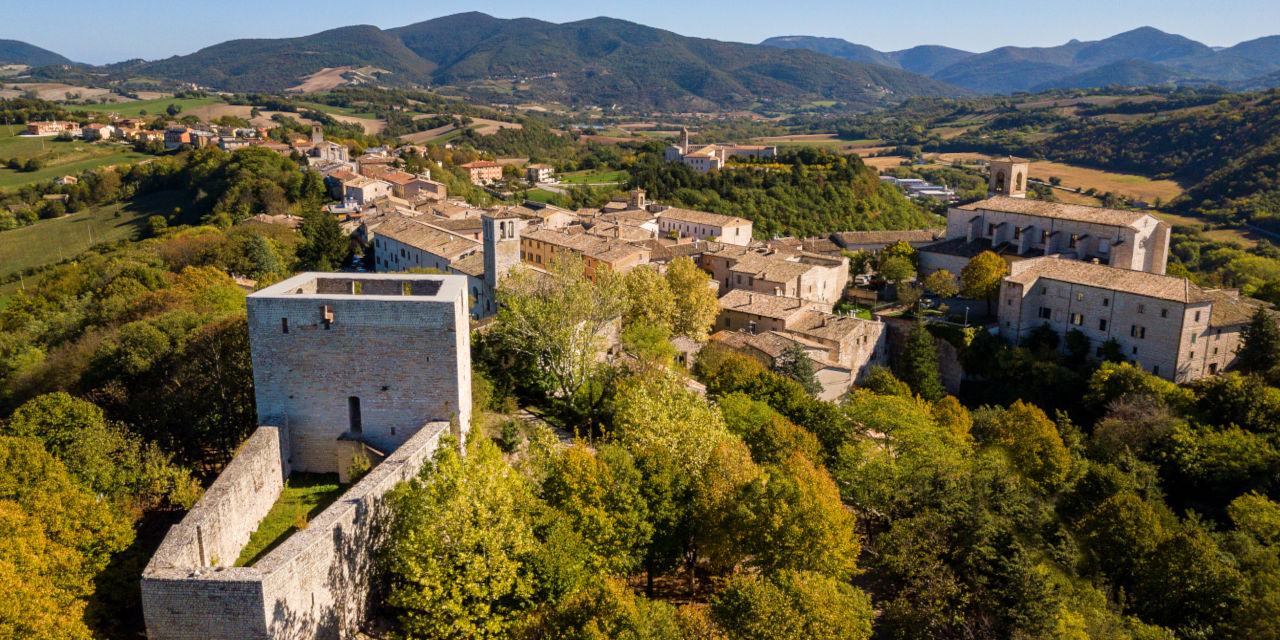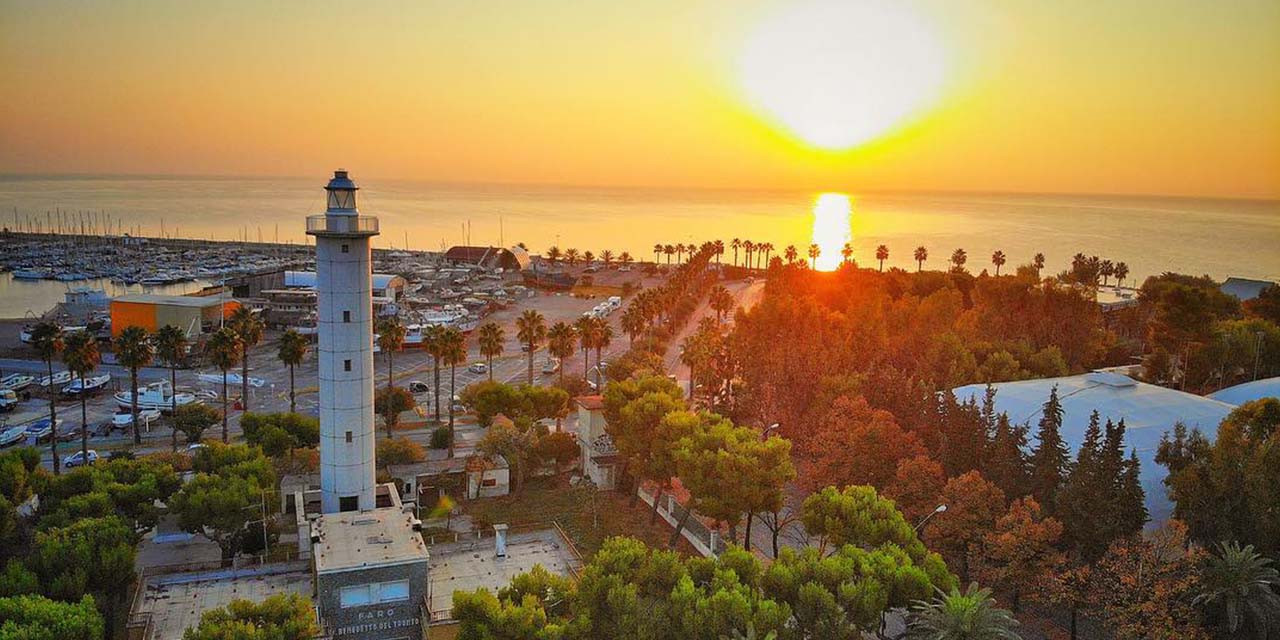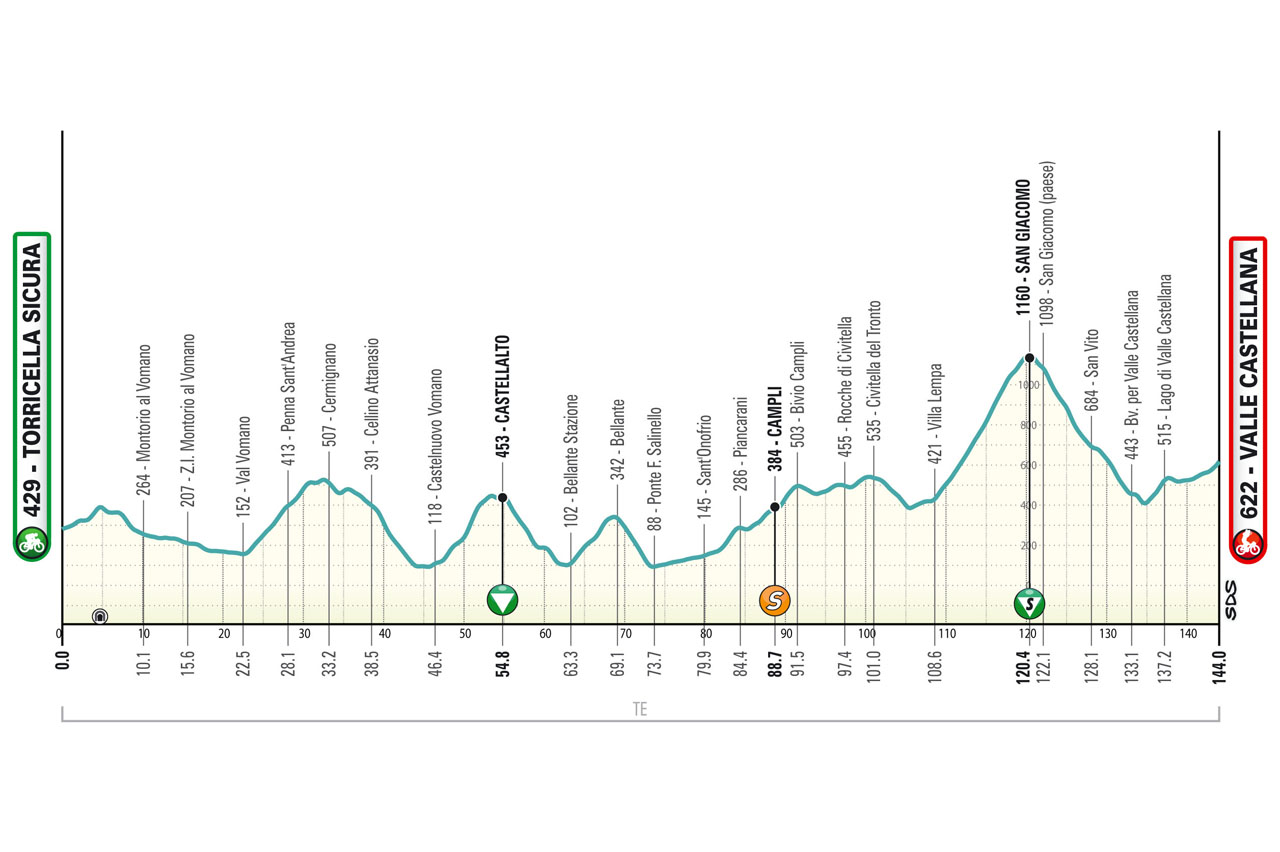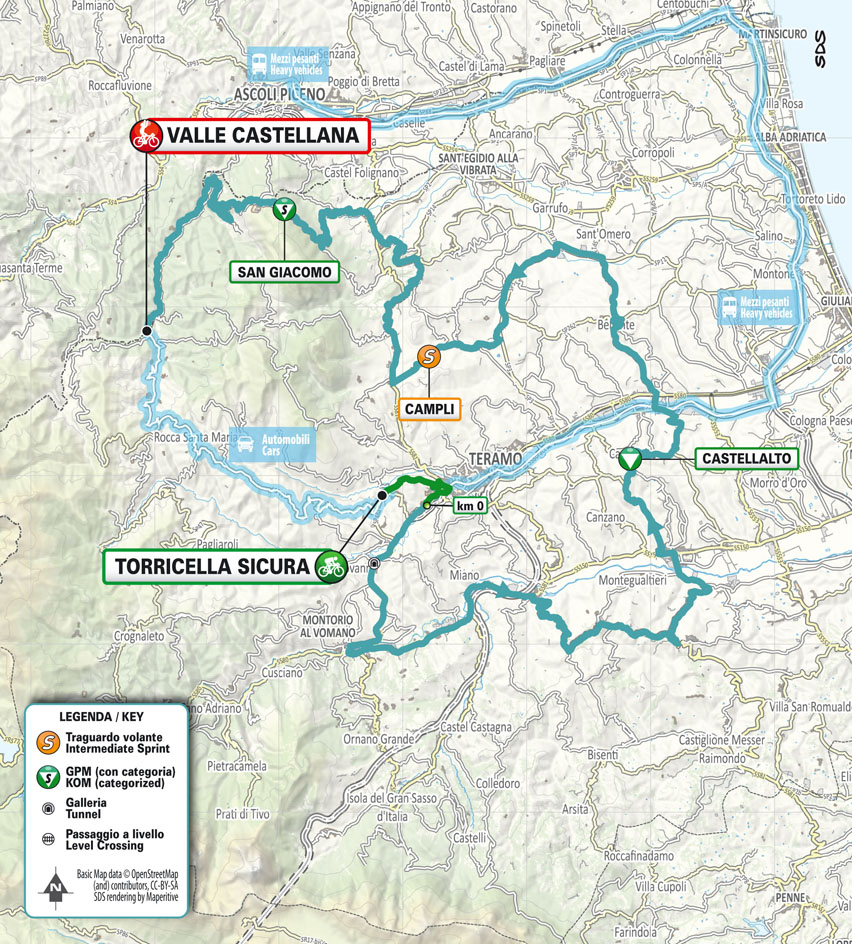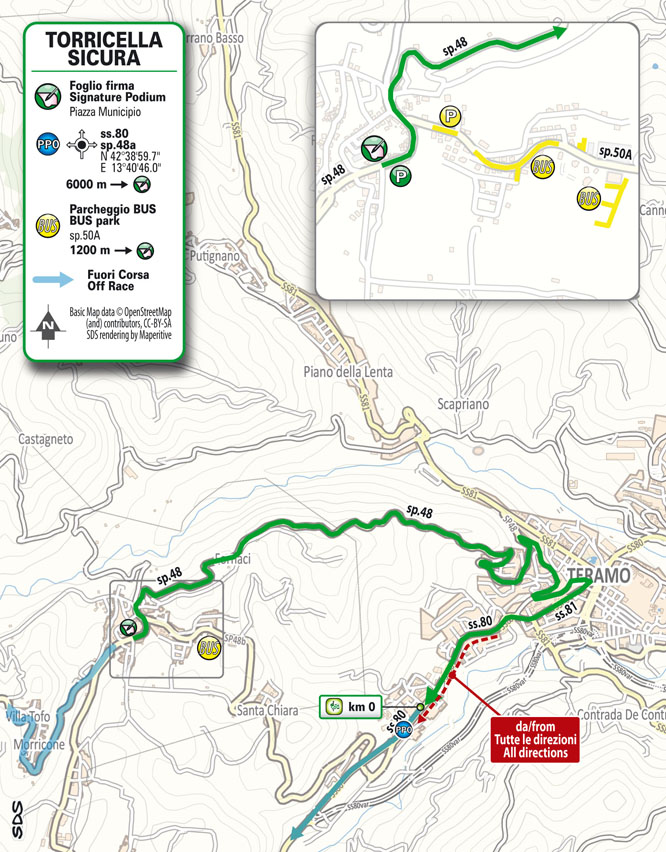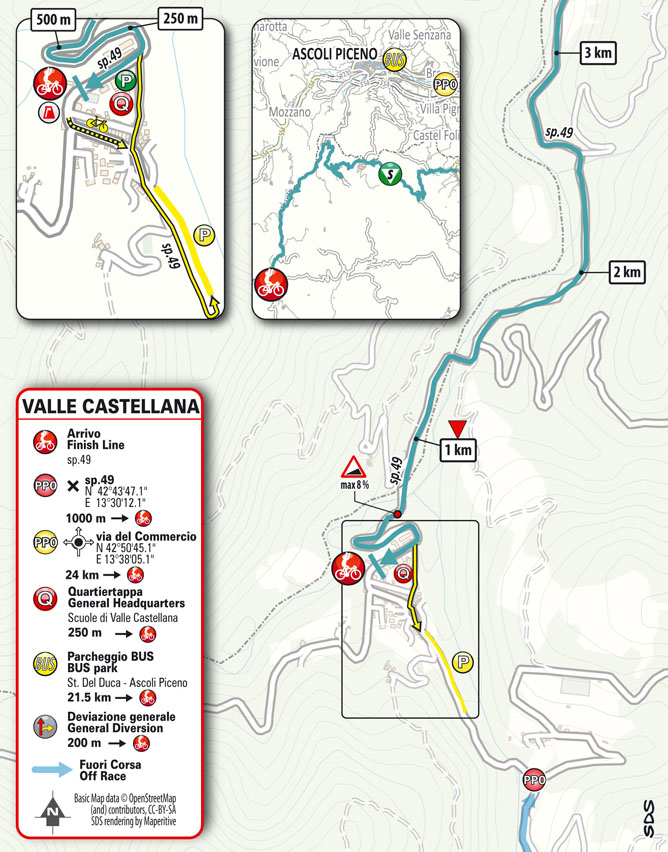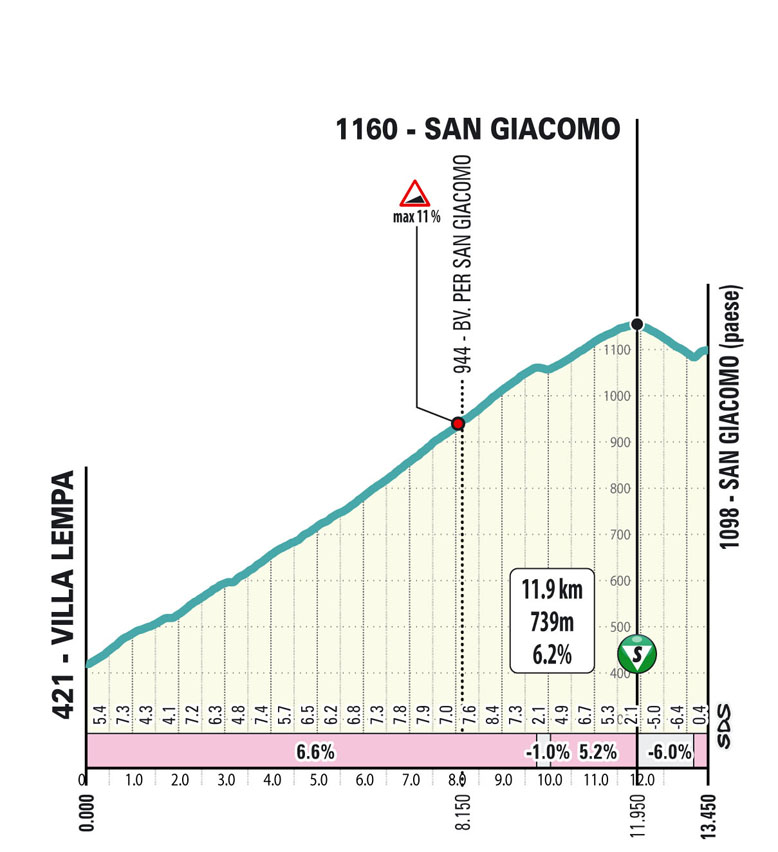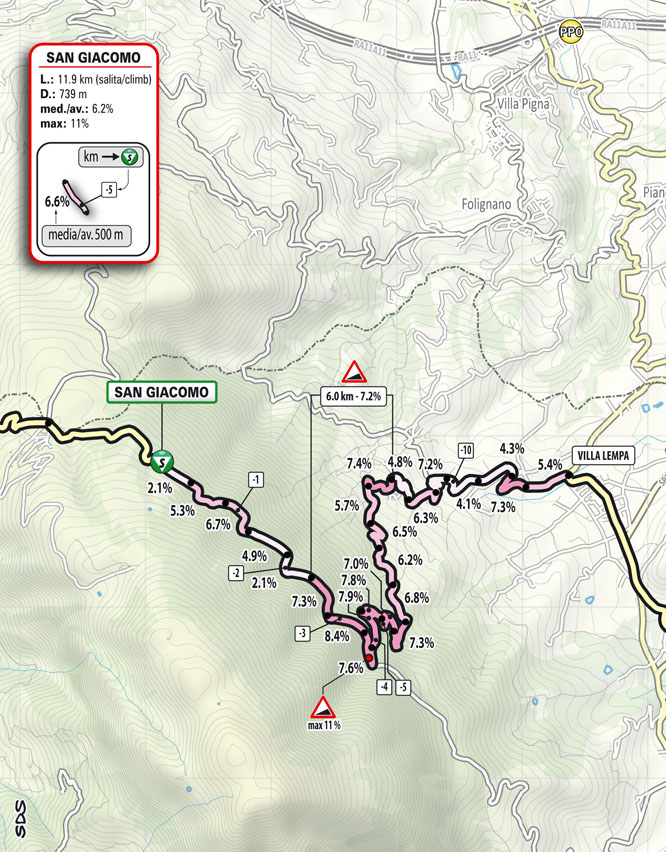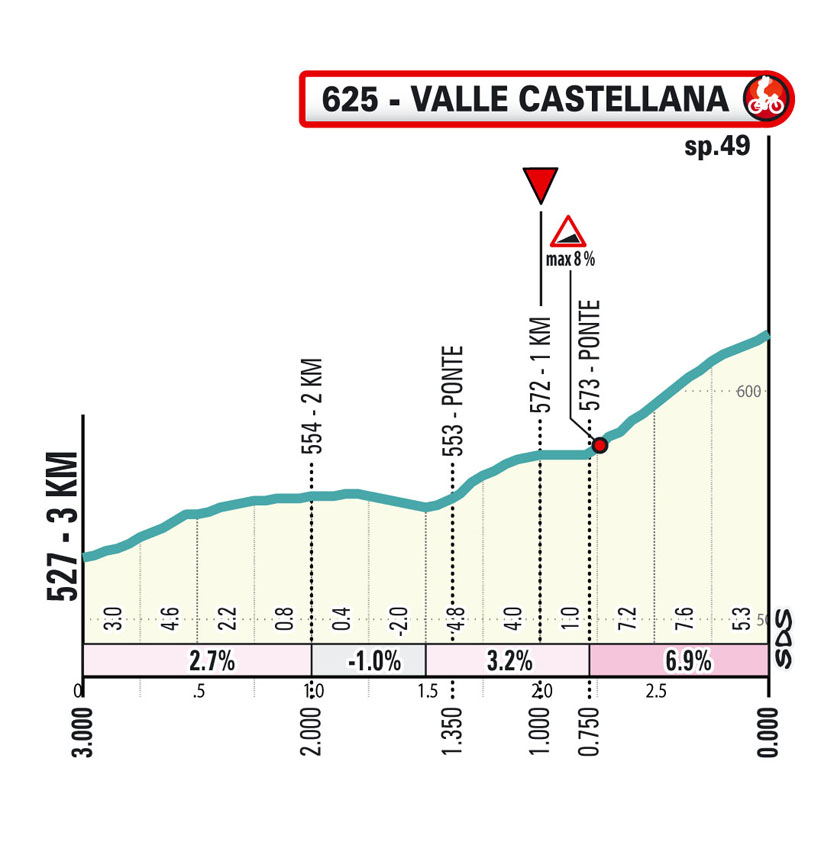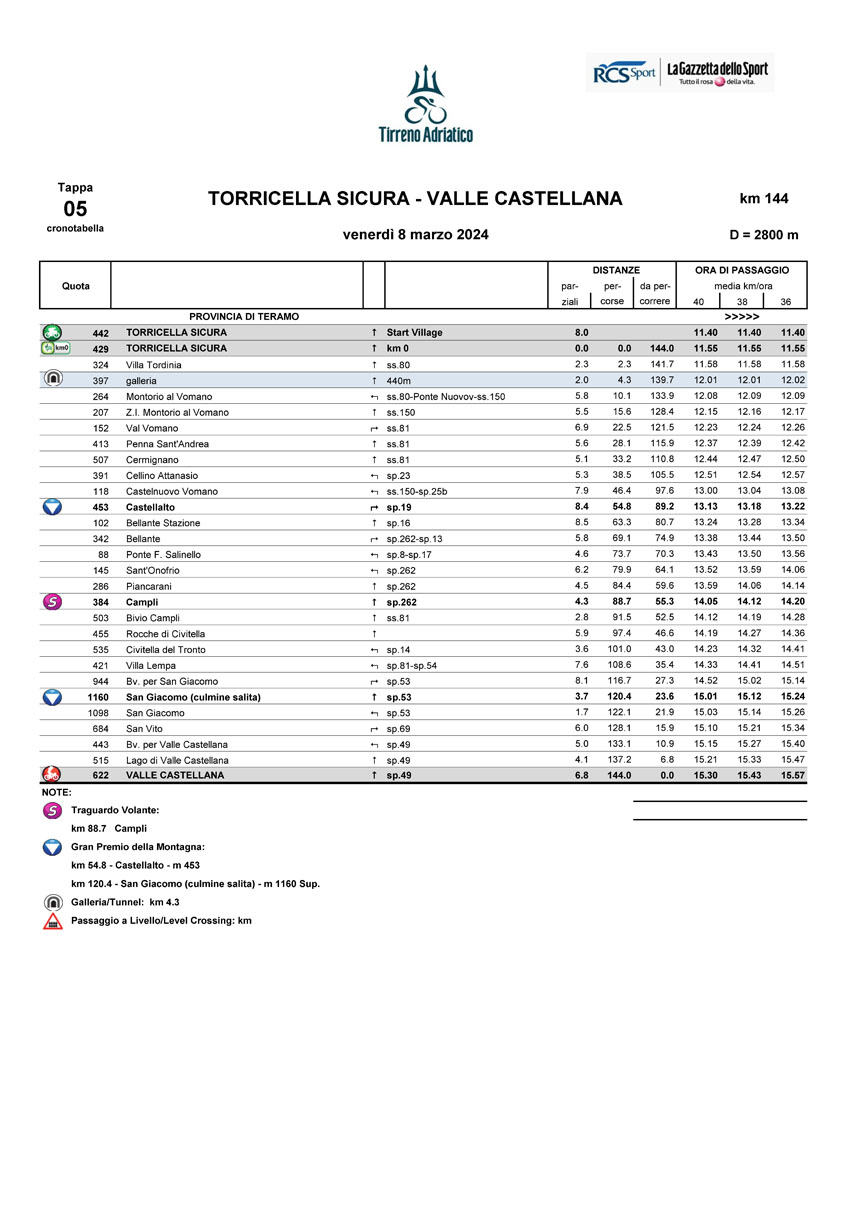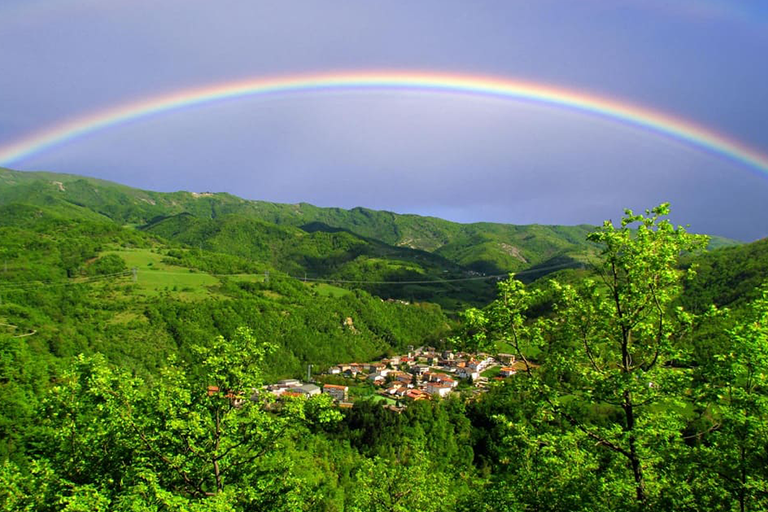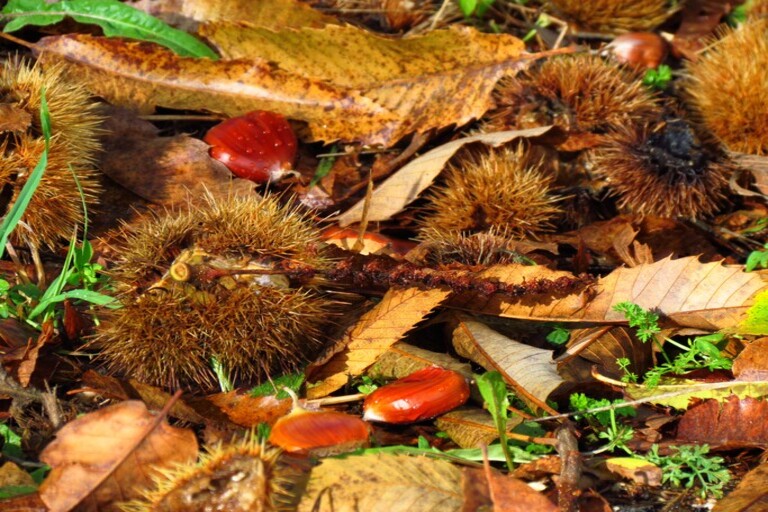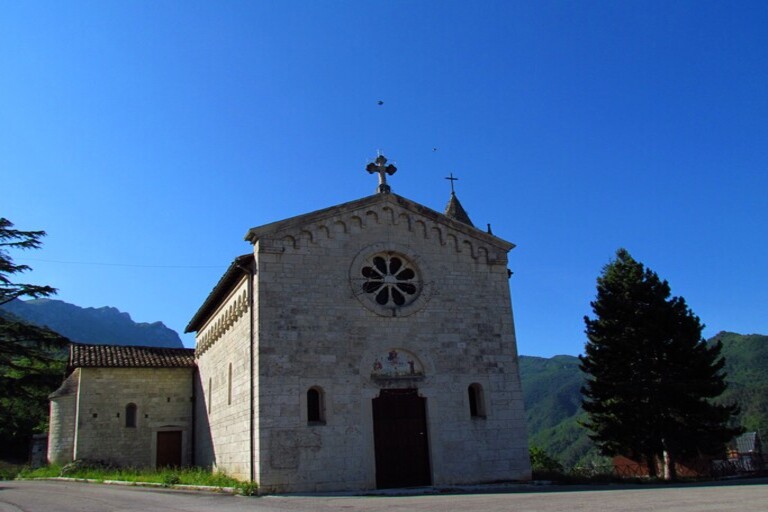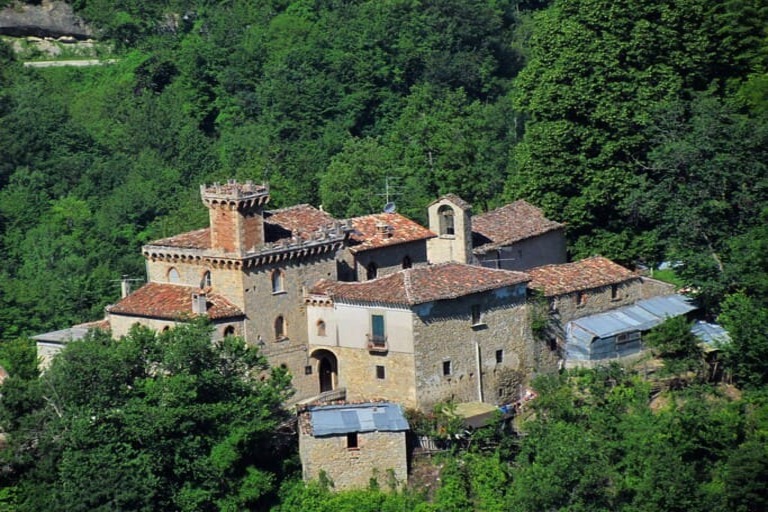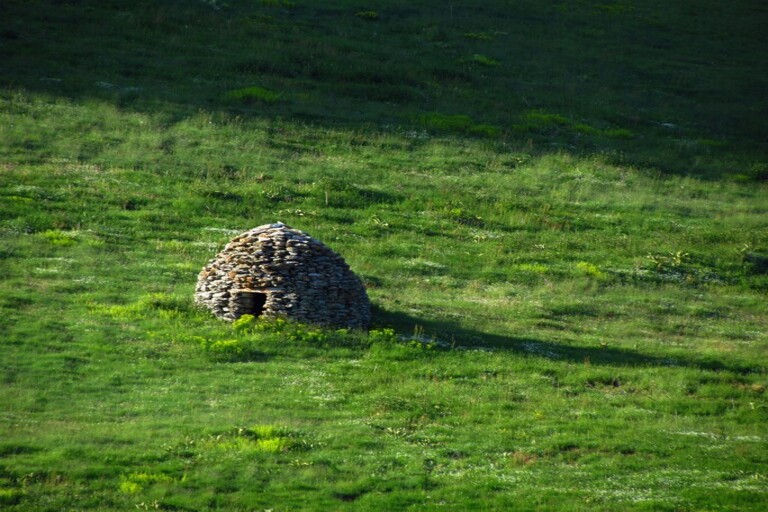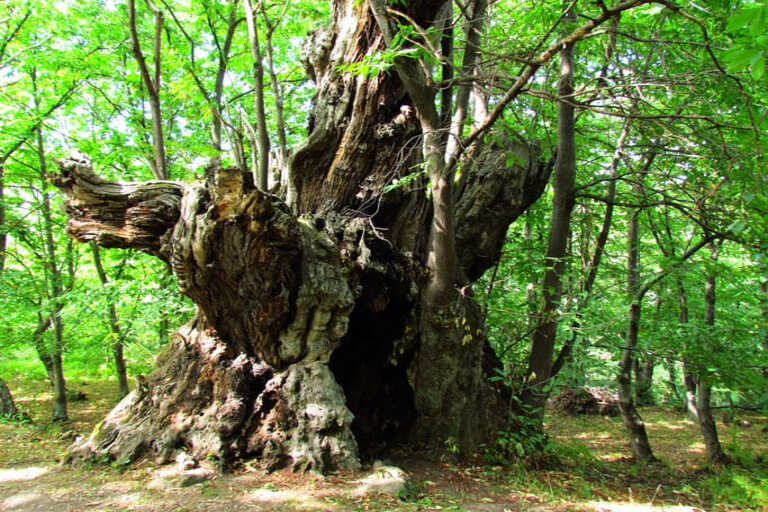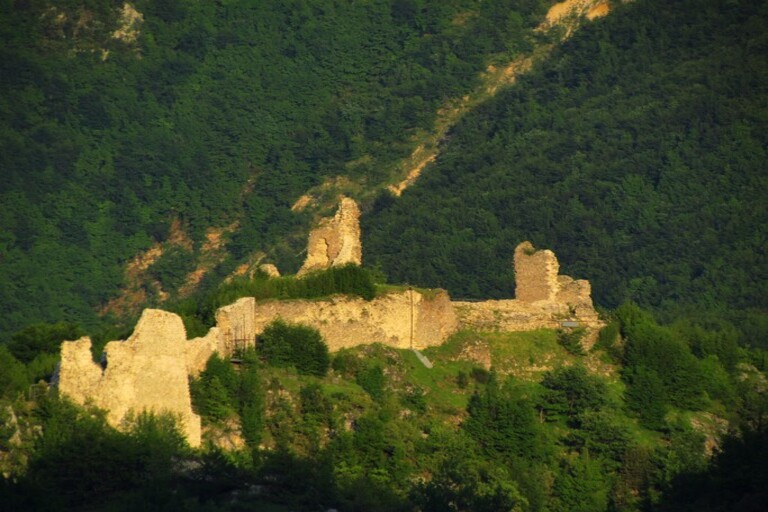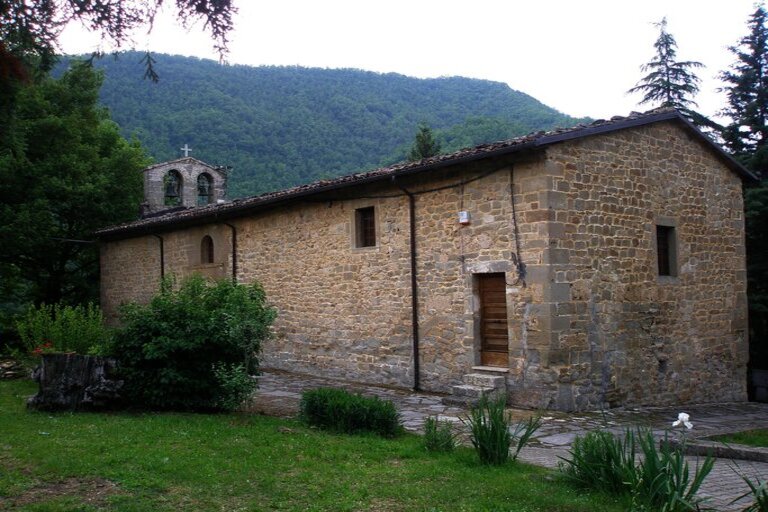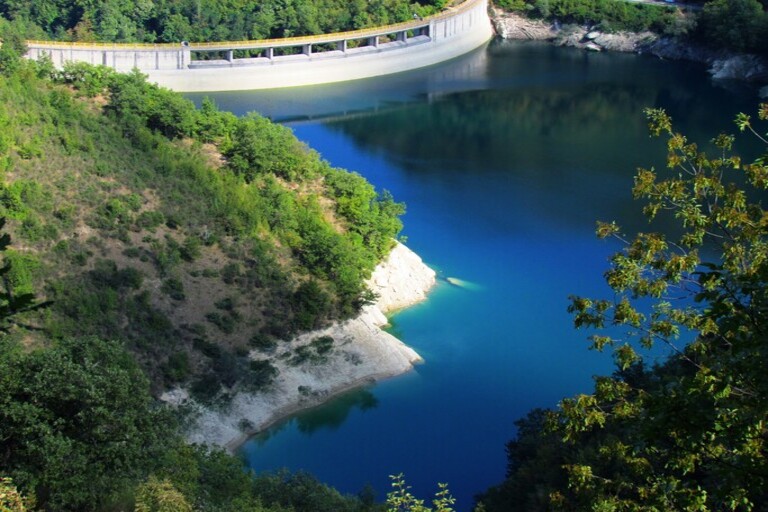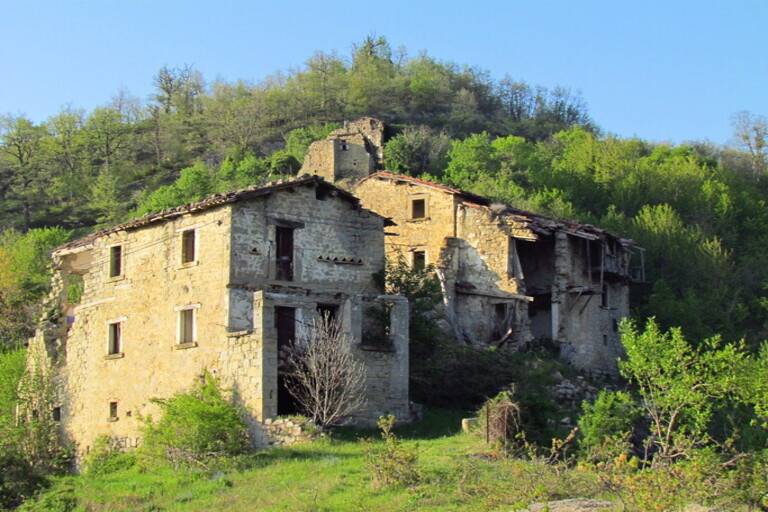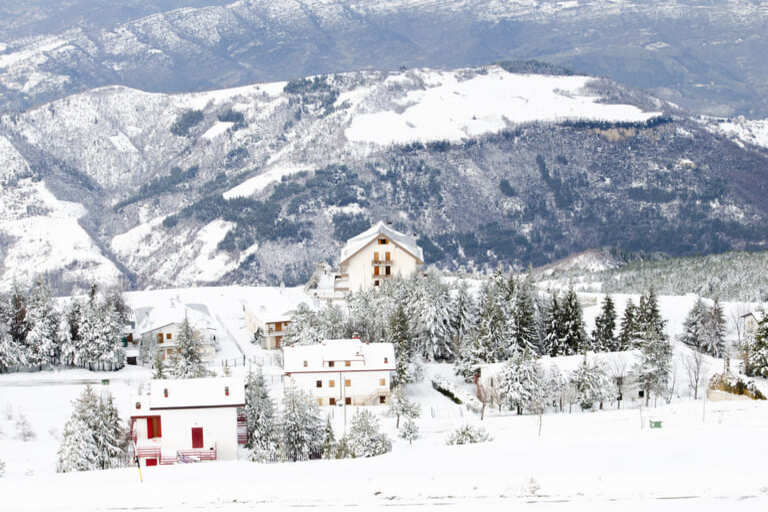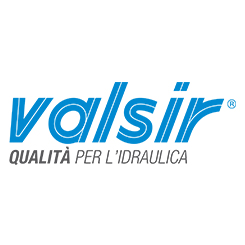learn more
technical info
profile
map
technical info
A very challenging stage with a difficult climb in the finale. The entire route has pretty much no flat ground. From Torricella Sicura, after Km 0 located in Teramo at the end of the initial descent, the stage features an endless succession of climbs and descents. Some iconic places for the Corsa dei Due Mari, such as Castellalto and Bellante and some from the recent past, such as Campli and Civitella del Tronto, will be crossed. The route is extremely articulated both altimetrically and planimetrically. After Villa Lempa, the peloton will climb to San Giacomo from the eastern slope (12 km at an average 6.2%) and then descend into the Castellano valley with 10 km of flat terrain alongside Lake Talvacchia.
Last km
The final kilometres are flat until the very last one begins, which features a climb to the finish with an average gradient of around 7% and slightly higher peaks.
start / finish
climb detail
final kilometres
itinerary timetable
tourist info
Host city:
Torricella Sicura
Overview
The municipality of Torricella Sicura encompasses an area located north-west of Teramo that starts at an altitude of 286 m asl and reaches up to 1572 m asl. The landscape offers wooded stretches of oak, hornbeam and maple trees with numerous streams rich in water that flow from the slopes into the Vezzola stream to the north and the Tordino river to the south.
Food
Mushrooms and truffles, fried cheese, Pizzonde, Minestrone alla Torricellese and Pecora alla Callara.
Points of Interest
- Museo etnografico Le Genti della Laga: set up by Gino Di Benedetto with immense passion in more than thirty years of research in the villages, old farmsteads and countryside of the most hidden Abruzzo, it is an unexpected time machine, the place where it is possible to relive the atmospheres of our great-grandparents who lived in the valleys of Abruzzo Teramo and on the Laga mountains.
- The hamlets: the history and charm of Torricella Sicura are also linked to its hamlets, with their numerous inhabited locations: Ioannella (with Poggio Valle, Pastignano, Popolo and Valle Piola), S. Stefano (with Abetemozzo, Borgonovo, Poggio Rattieri, Corvacchiano, Faognano, Ginepri, Magliano, Magliano da Capo, Magliano da Piedi, Ricci, San Felice), Torricella Sicura itself (with Piano Grande, Antanemuccio, Fornaci, Morricone, Progetto, S. Pietro, Costumi, Sciarra, Tizzano, Tofo): as Di Cesare also wrote, each of these localities, some of which date back to archaic times, deserves its own history.
Valle Castellana
Overview
Valle Castellana is a small municipality that encloses numerous villages of medieval origins originating along the Castellano stream, once known as Verde; legend has it that it is the one mentioned by Dante in the third canto of the Purgatory, in which Manfredi tells him how he died and where he is buried. It is located on a slight hill in the province of Teramo, in the hinterland of Abruzzo, bordering with the Marche region, deep in the Gran Sasso and Monti della Laga National Park. The area extends from medium-low altitudes (400 meters above sea level) up to highpeaks, exceeding 2400 meters above sea level.
Food
Valle Castellana houses the largest area of chestnut groves in the province of Teramo. Chestnuts, “marroni” specifically, are placed on the market as fruit, but they are also used to make numerous dishes. The “Vallecastellaneses” produces jams, tarts, preserves and sweet ravioli thanks to this precious raw material. It is also the main ingredient for “calcionetti”, a fried dessert, typical of Christmas festivities, made with puff pastry and filled with chestnut paste, bitter cocoa, coffee and rum.
The mountain climate, with snowy winters and mild summers, allows the growth of many species of mushrooms, which also constitute a predominant ingredient in the local cuisine. Tagliatelle with porcini mushrooms is a typical meal, prepared with homemade pasta and mushrooms.
Since ancient times, the Castellano valley has been home to shepherds. Traditional recipes have been handed down from generation to generation, all of them including the sheep and sheep farming derivatives and the main ingredients. So there’s cheese, usually mature, which is perfect to be served with tasty honey. You can also have fresh cheese, though, which is often sliced, battered and fried. And then there are arrosticini to be grilled over the special “canaletta” and “pecora alla callara”.
Wines and Beverage
The genziana liqueur is thetypical liqueur of Abruzzo in general, and in particular of Valle Castellana. It is amber-colored and has a very intense, fresh and invigorating bittertaste.
Points of Interest
Castel Manfrino (“Manfredi Castle”): it owes its name to Manfred of Swabia. It was built between the 12th and 13th centuries on the remains of an ancient Roman fortress, which was built to defend the road that led from the Via Salaria, near Amatrice, through the ‘Hannibal Pass’, into the Campovalano plain. Nowadays, only few remains of the fort are left, among which it is possible to find an early Christian baptismal font and an important workshop where metals were worked.
Castello Bonifaci (“Bonifaci Castle”): it is an impressive building located in the village of Valleinquina. It was built in the early 20th century, probably on the remains of an older building. The castle, located next to other dwellings, boasts a bridge leading to the back courtyard, where there is the small church of St. Nicholas of Bari, with a square façade and a gable roof.
The church of Santa Maria di Stornazzano: it stands on a bank of the Castellano stream and is the main church of Valle Castellana. Its origin dates back to the 11th century. A peculiarity of the building is the presence of two different portals, one of which is located on the main stone façade, while the other is located on the side one.
The Church of San Vito: it is a Benedictine church dating back to the 12th century, under Farfa jurisdiction until 1741.It is a rectangular trussed building with an apsidal presbytery in14th-century Romanesque forms.
Laturo (about 850 meters above sea level): it is a hamlet of Valle Castellana that shyly looks out and can only be admired from afar. It is an ancient village of unusually large dimensions, it was connected to the rest of the world by a mule track. Nowadays, the village can be reached thanks to various paths and it is a tourist destination for many hikers. It has been renovated and is preserved by the “Amici di Laturo” association. The rebirth of the village has been proceeding since 2012 with the first conservative restorations of private homes, the cleaning and reopening of the access paths, the recovery of the vegetable gardens and the organization of sporting and cultural events in support of the Association’s mission.
Castagno di Nardò (“Nardò chestnut”): in the Morrice area, at around 800 meters above sea level, there is the famous Nardò tree or “piantone di Nardò”, one of the largest chestnut trees in Italy with a record circumference of 14 metres. Its appearance dates back to 1300, which also makes it one of the longest-lived trees in Abruzzo. It is included in the list of protected secular plants, being one of the largest chestnut trees in Italy. The local population has a very close bond with this chestnut tree, in fact, some call it “grandfather chestnut”.
Grotta della paura (“cave of fear”): it is an unexplored cave with unknown depths located between the villages of Settecerri and Laturo. Legend has it that several people died near this cave after getting a big scare. This is where the name comes from: Grotta della Paura (Cave of Fear).
The caciare: they are small stone buildings in the shape ofigloos. They are characteristic of this area and similar to the Tholos of Majella. The ‘caciare’ were used by shepherds to shelter and to process cheese in a sheltered place.
Videos Stage 05
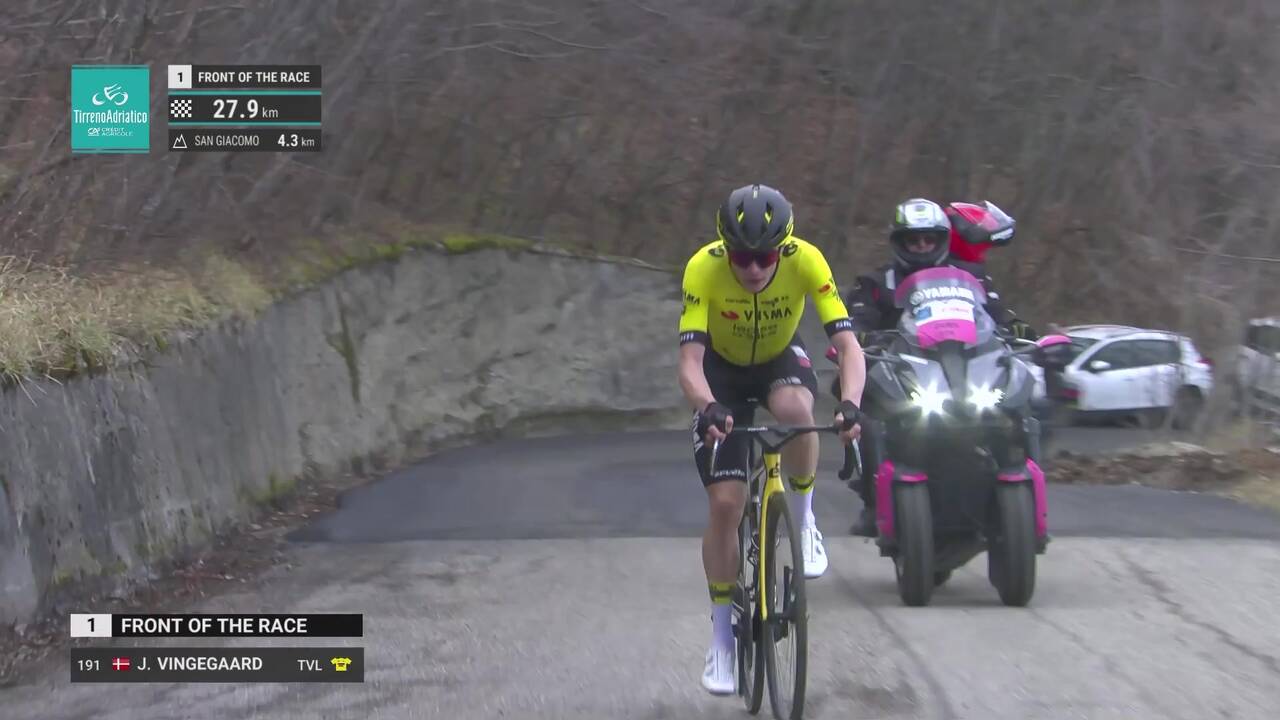
Tirreno-Adriatico Crédit Agricole 2024 | Stage 5 | Highlights 🇮🇹
8 Mar 2024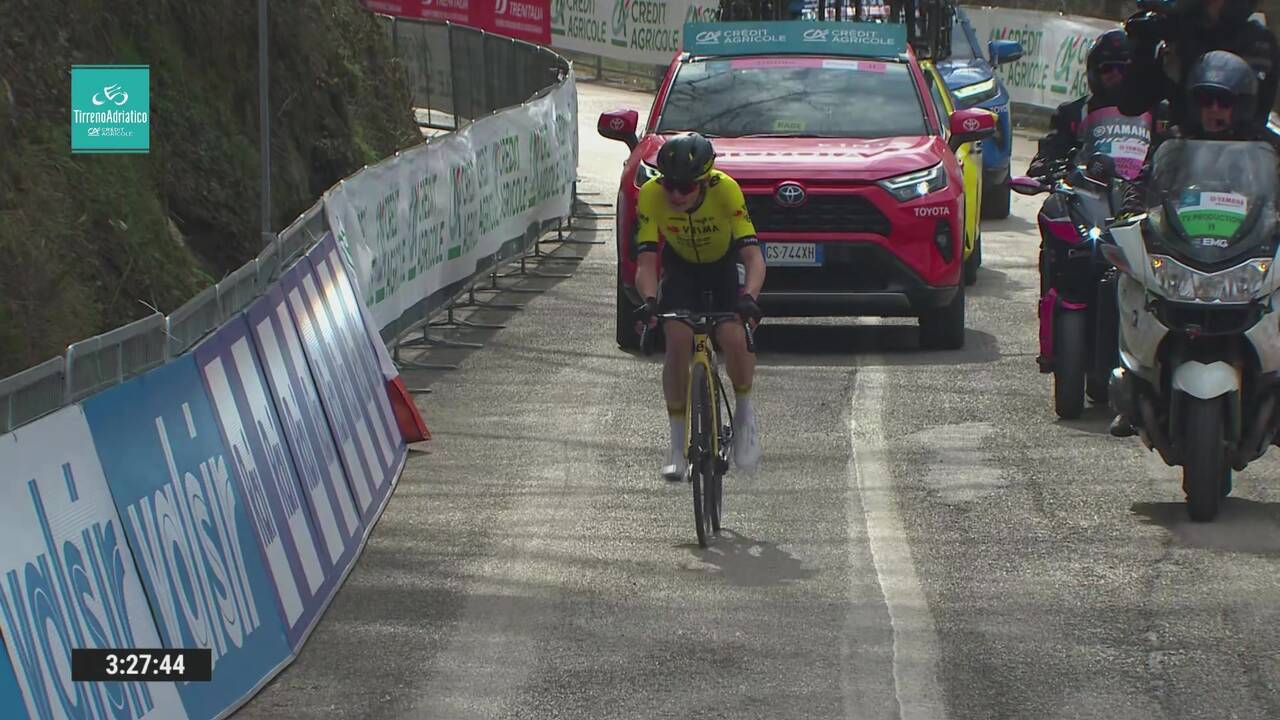
Tirreno-Adriatico Crédit Agricole 2024 | Stage 5 | Last KM 🇮🇹
8 Mar 2024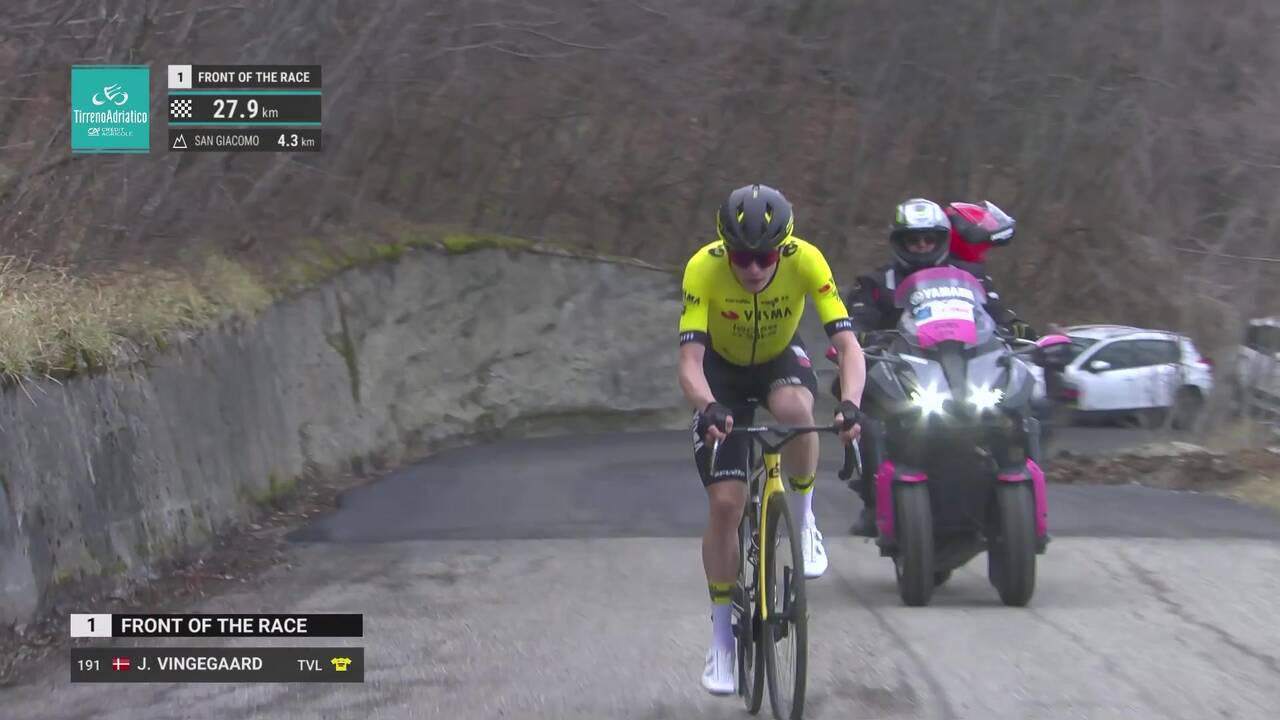
Tirreno-Adriatico Crédit Agricole 2024 | Stage 5 | Highlights 🇬🇧
8 Mar 2024Photos Stage 05

Tirreno-Adriatico Crédit Agricole 2024 | Tappa 5 | Best of
08/03/2024

